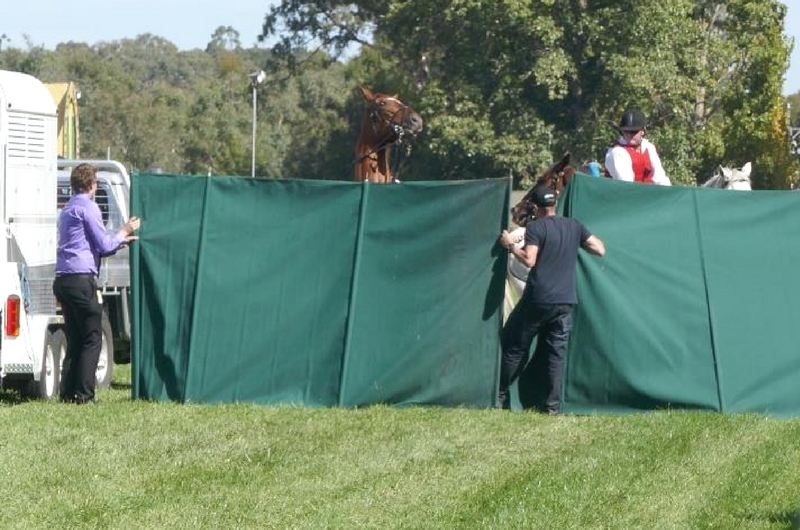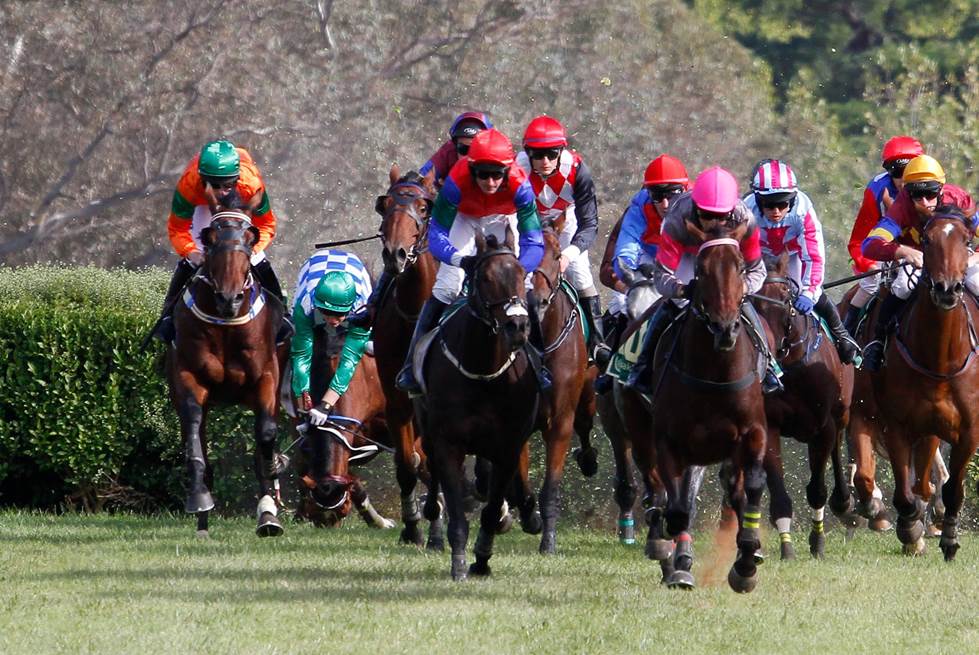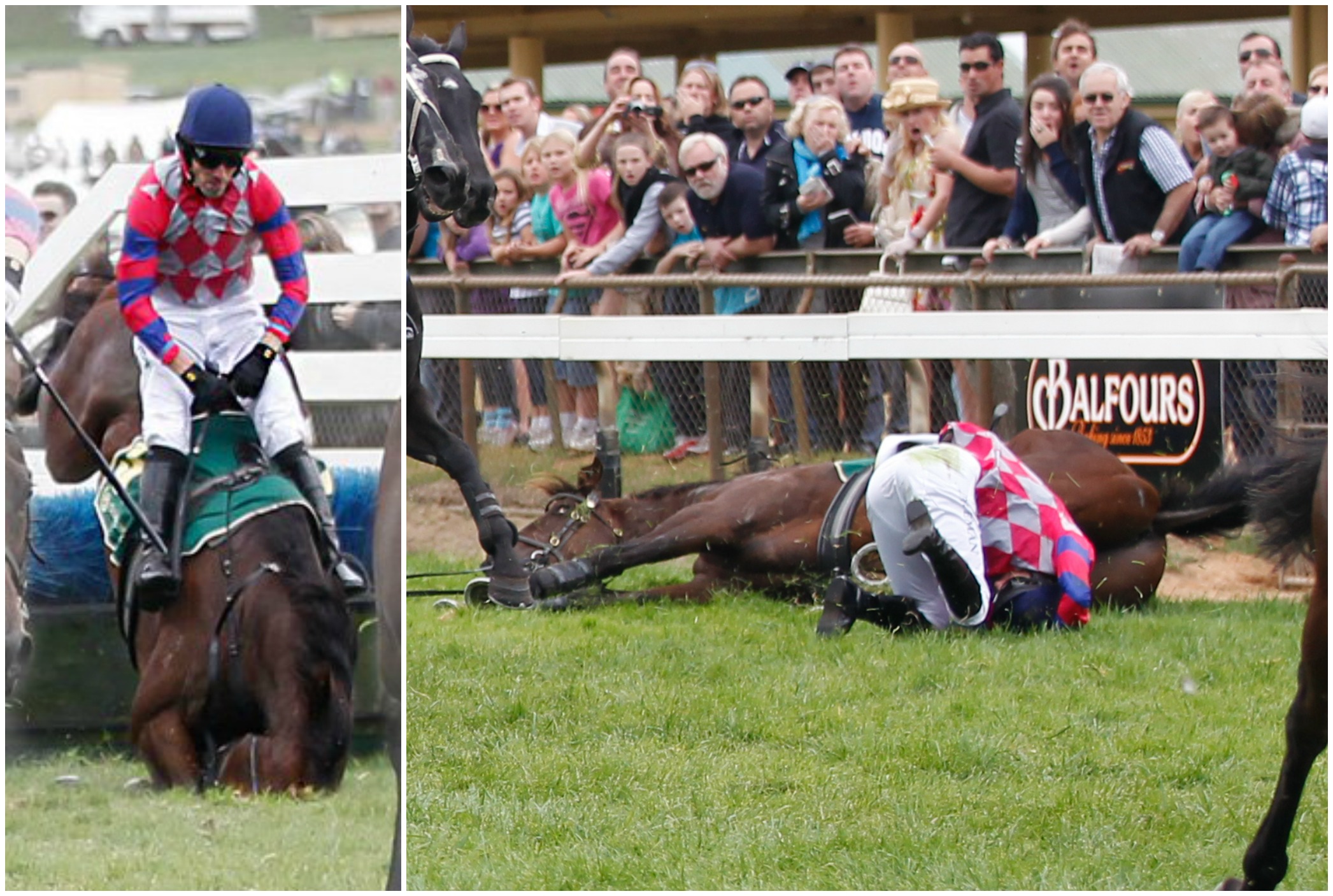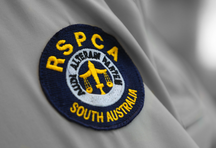Australia’s racing industry struggles to hide the ugly truth of jumps racing
March 15, 2018On the first day of the Oakbank racing carnival last April, five-year-old Wheeler Fortune fell at the final hurdle, in front of the main grandstand, and broke a front leg.
The green screens went up with well-rehearsed precision, a vet administered a lethal injection, a horse float carted away the dead animal and the carnival continued.

Less than three weeks later, a six year old gelding called Bring Back jumped awkwardly at the sixth obstacle in Race 5 at Warrnambool. Then he fell at the eighth, fracturing his shoulder. He, too, ended up behind a green screen before being carted away dead in a float.
Of the ten horses in this hurdle race, only six finished. Bring Back was among three that fell, and one was eased out. Such is the gladiatorial nature of jumps racing, with horses knuckling on landing after fences, crashing into each other over fences and falling (sometimes fatally) at fences in almost every race.
If the falls, near-falls, injuries and deaths happened at the same rate in flat races it would shock even hardened punters.
By the end of the 2017 jumps racing season in the only two states that still persist with this activity (South Australia and Victoria) another two horses had died – one broke its neck at Casterton, the other a leg at Murray Bridge. In the latter, it was the horse’s first – and last – jumps race.
The total number of deaths in jumps races since 2009 now sits at 58 – 18 in South Australia and 40 in Victoria. A University of Melbourne study found that horses in jumps races were nearly 19 times more likely to die than those in flat races.

But these statistics don’t tell the full story. Some deaths caused by jumps racing injuries occur well after the actual race – and well away from public view. These deaths, either by euthanasia or with the injured animal sent to slaughter, are neither reportable nor traceable – unless you look hard.
Above Average is one such horse whose death didn’t make the jumps racing death tally for 2015, the year he ran his final race.
Trained by Victorian Eric Musgrove, Above Average was nine years old when he had his last start in Mt Gambier in May 2015. By then he’d won his owners $382,000. The Steward’s Report for this race stated that Mr Musgrove would need a Veterinary Certificate of Fitness “prior to presenting the gelding for a future trial or race”.
There was no mention in the report of the horrific incident where the horse slipped after the race finished. Despite regular checking, at least three months passed before Above Average was listed as ‘deceased’.
The jumps racing industry has a habit of trying to conceal its ugly truth, going so far as to treat the death of a horse in a jumps race as if it never happened.
Cliff’s Dream crashed at the second to last hurdle during the 2016 Warrnambool racing carnival, broke a leg and was euthanased.
Yet, if you’d watched footage of this race on Racing.com, the industry’s television station and website, you wouldn’t know this happened. Someone had done a quick edit. Even the two race commentators didn’t say anything when the big grey fell.
Similarly, when two of four starters fell in a hurdle race at Murray Bridge on Anzac Day last year, video footage of every race at this meeting was available to view on Thoroughbred Racing SA’s website – except this race.

If Racing Victoria and TRSA feel they must hide the ugly reality of what inevitably happens when you force horses to gallop in a pack over obstacles spaced over long distances, they should equally feel a responsibility to ban it. But they don’t.
Another Oakbank Racing Carnival begins this weekend.
For the first time the Oakbank Racing Club has spread its six jumps races over two weekends. The first two jumps races will be run this Sunday, the next two on Saturday March 31 and the final two on Easter Monday. It’s the Club’s attempt to redress the steady decline in attendances. As further incentive, entry is free and the marketing team has a new banner – “The Adelaide Hills Gourmet Gallop”.
So why not just make it a gallop? Why – when it does so much damage to the reputation of racing in South Australia – does the Oakbank Racing Club and TRSA persist with keeping the jumps?
That is the question no-one seems able to answer.
For more information on South Australia’s jumps racing industry and how you can act to help protect horses, please click here.




Disgusting that this is still going on. Everyone write to their local politician!
What is this with South Australia and jumps racing? Its the 21st century! This style of racing is so backward, old fashioned and, in this day and age, a disgrace to the Australian racing industry.
I accidentally saw a video with Sleep’n Pete breaking his neck in a race a few days ago. I cried for three days and am still in a shock about this psychopatic barbarism. I would like to tell all the psychopath jockeys and the members of the association how utterly and stomach-turningly disgusting they all are but I’m well aware of the fact the the world is full of this kind of people in all walks of life and my words would seem ridiculous. And worse still is that I wish the same fate for each one of them as those beautiful animals had to meet… Sorry for the outburst.